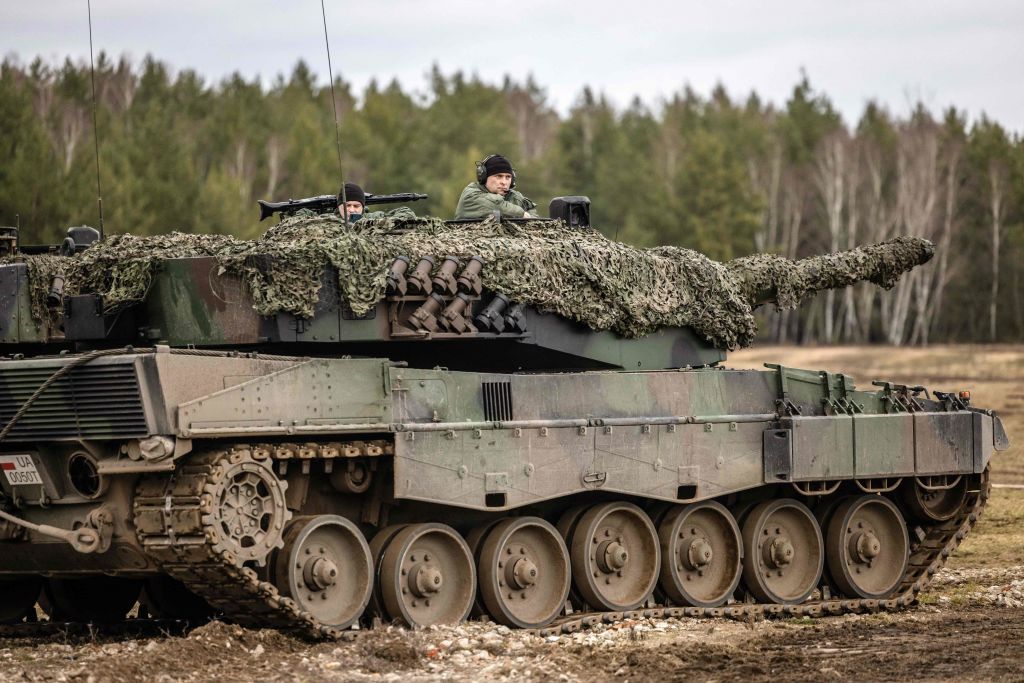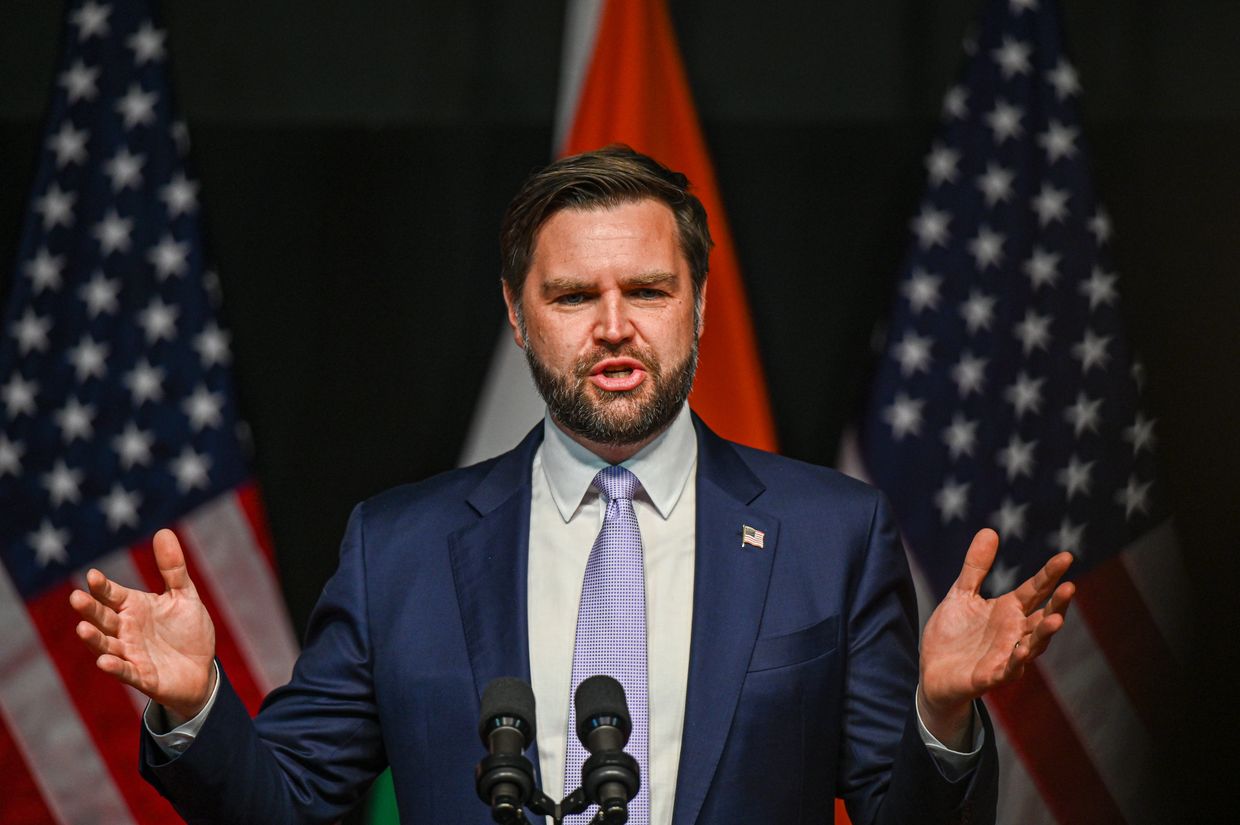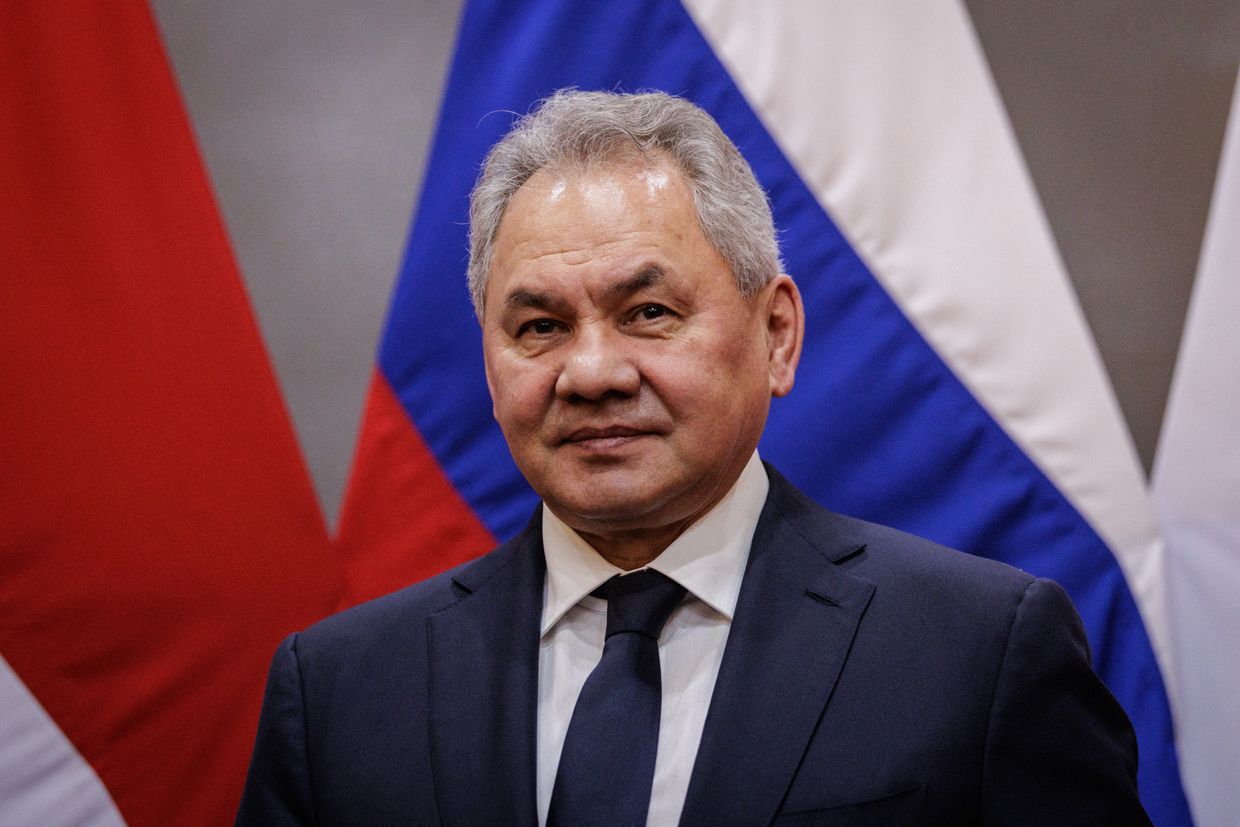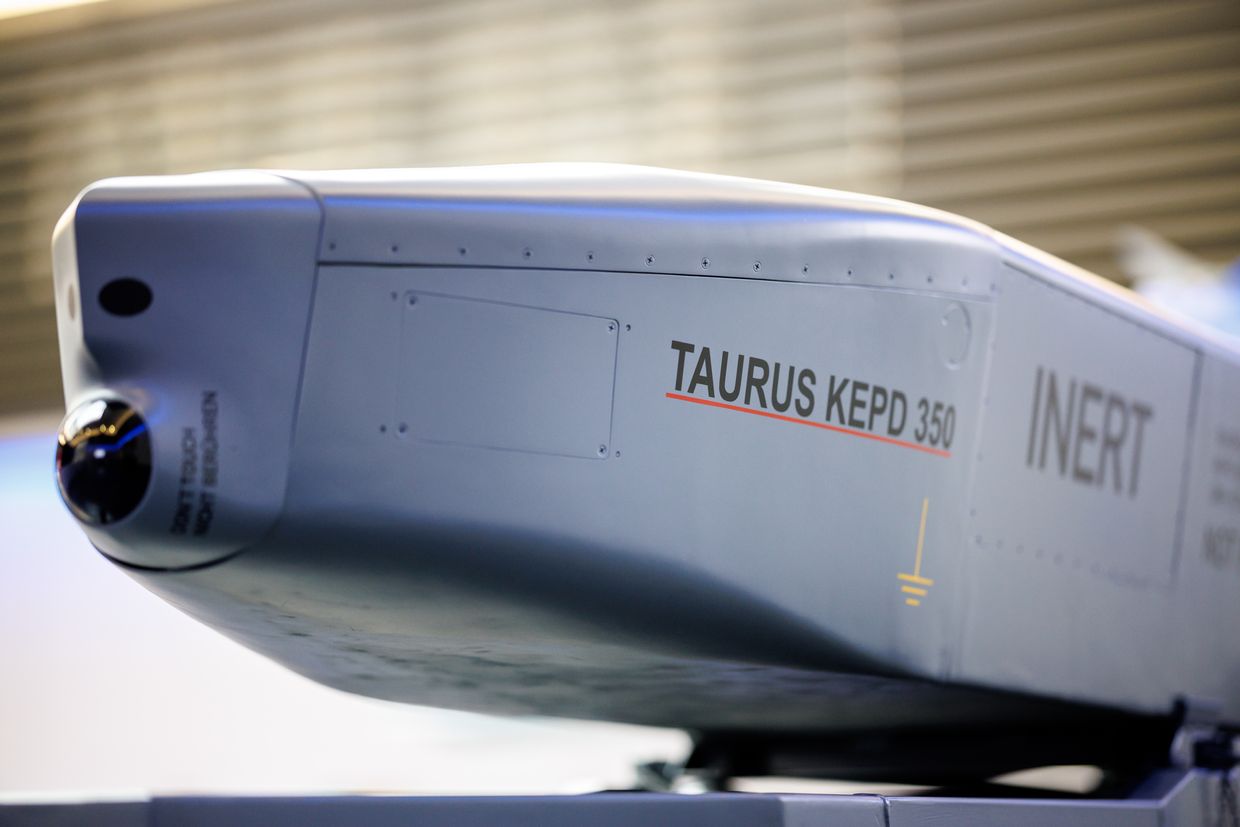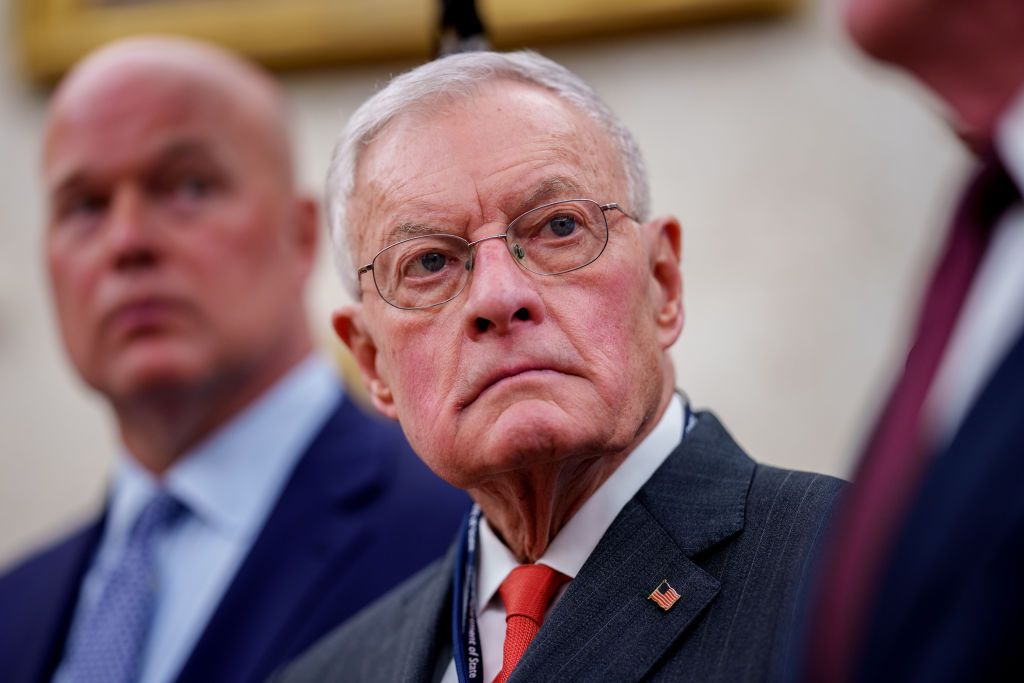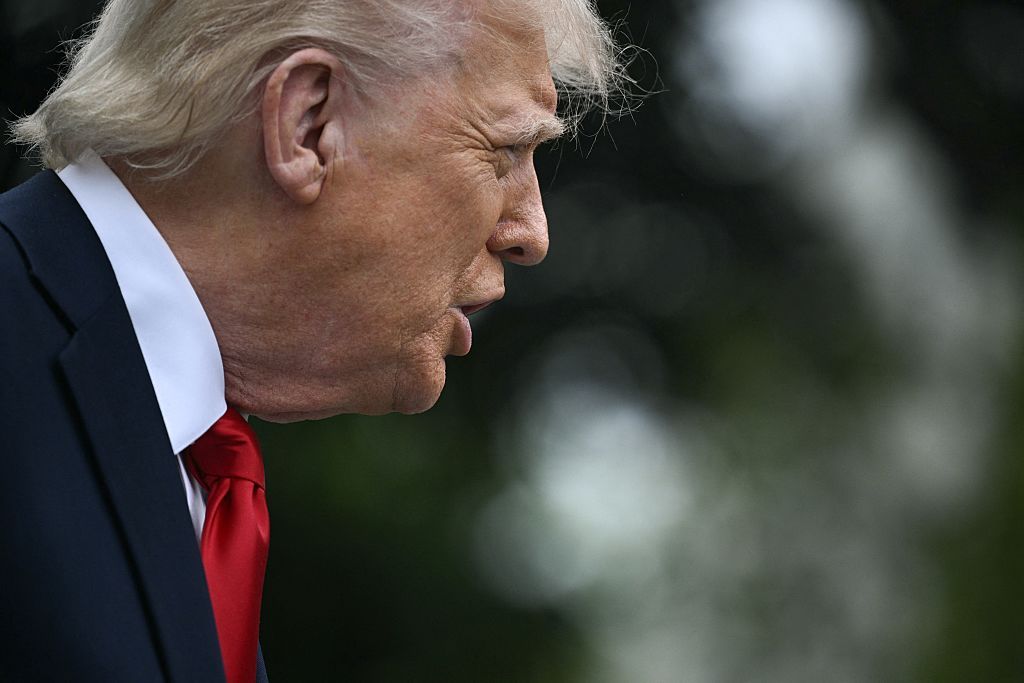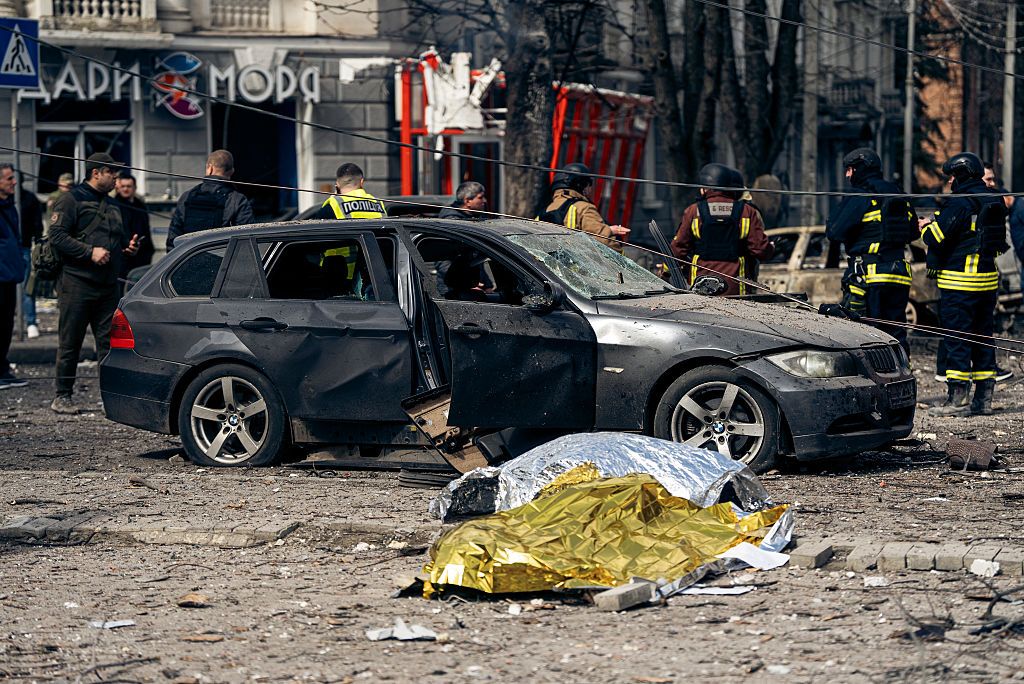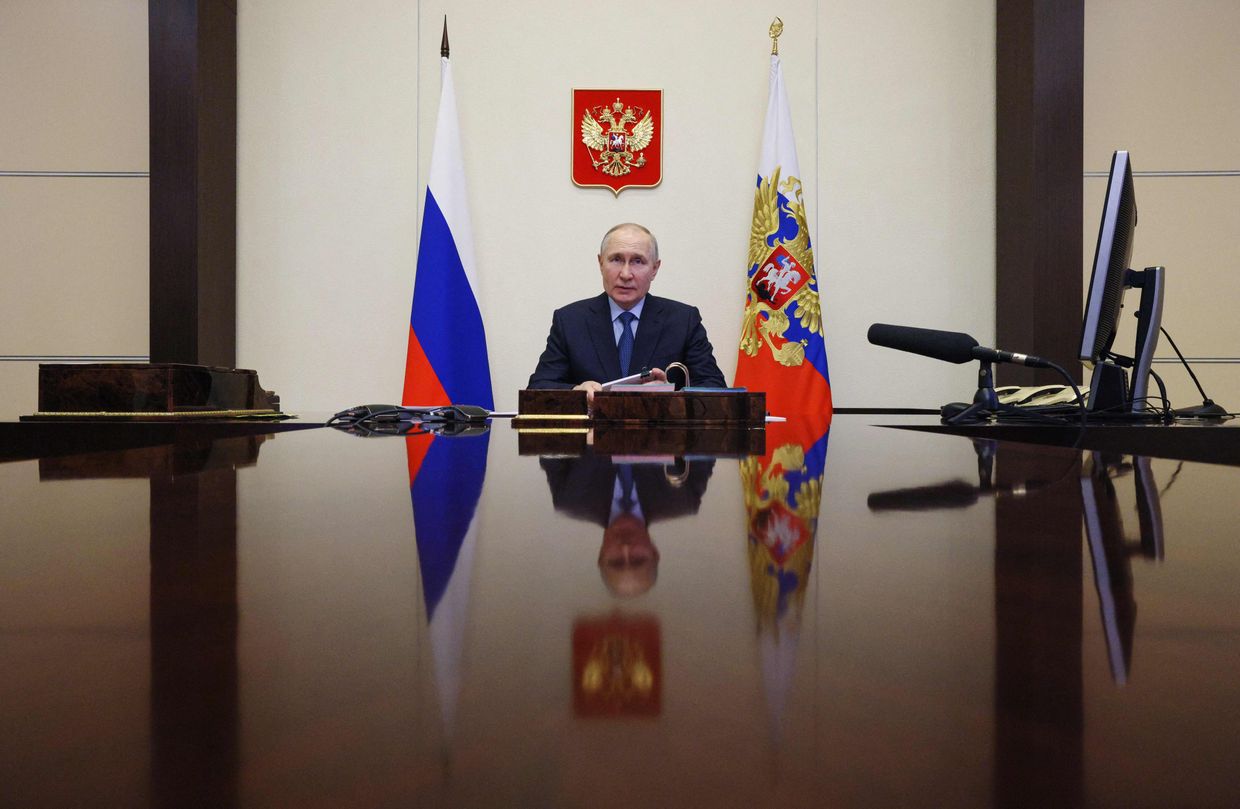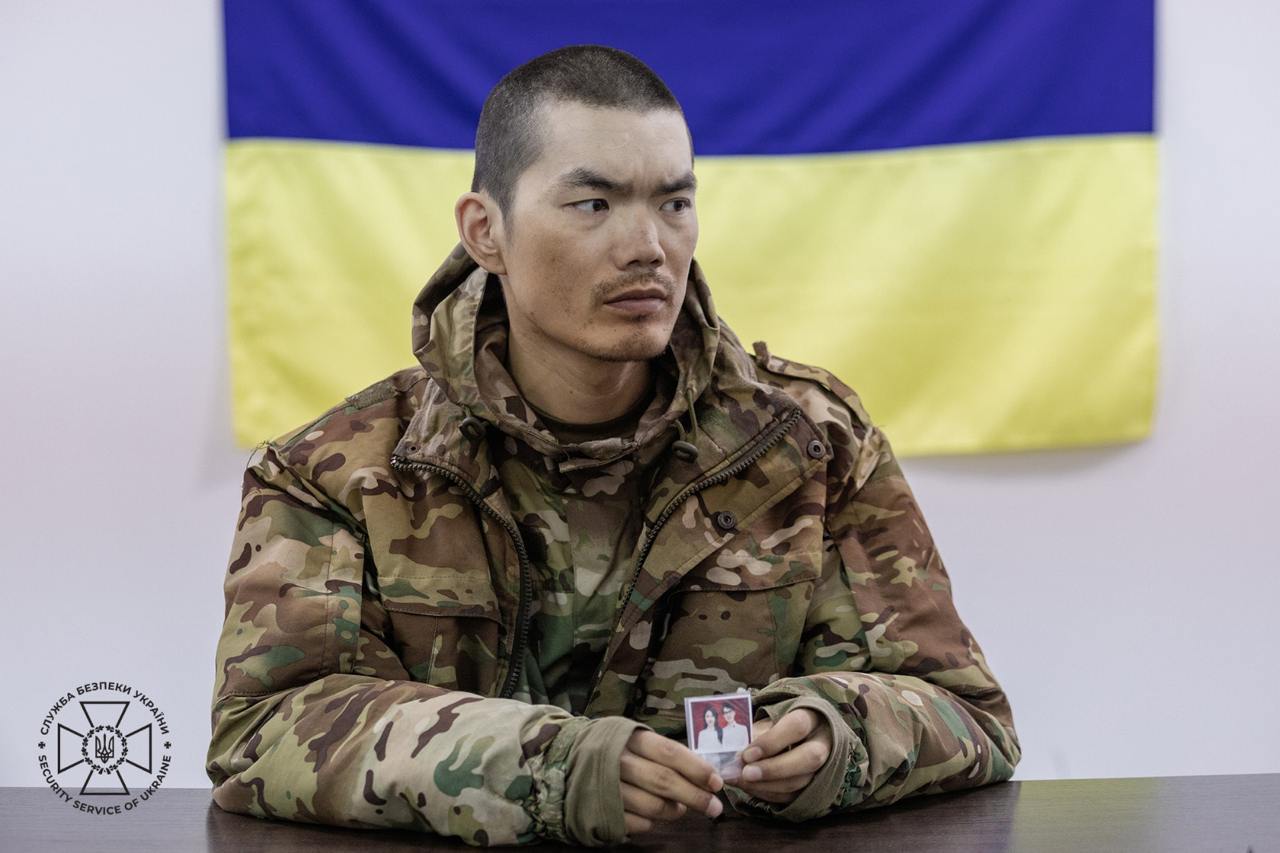It took a year of pleading to get the Western allies to promise to send modern main battle tanks, which Ukraine sorely lacks.
The country has been making do with Soviet-era T-64s, donated T-72s, and a smaller number of T-80 and T-84 variants. Ukraine has also captured hundreds of upgraded Russian T-72s and T-80s intact.
The Leopard 2, Challenger 2 and Abrams tanks promised by NATO countries in late January are a different class of vehicle. With better electronics, weapons, maneuverability, protection and soldier comfort, these 60-70 ton machines will give Ukraine a qualitative advantage over the T-72 and T-80 variants that form the backbone of Russia’s armor.
“Surpassing any Russian tank in terms of firepower, sighting and navigation system, and fire control systems, we get a tool that allows, in one operation, to defeat all the assault and shock units that the Russians have in the south,” said Viktor Kivliuk, a former Ukrainian officer and member of the think-tank Center for Defense Strategies.
Although these Western tanks were designed with defeating masses of Soviet tanks in mind, big tank-on-tank battles are rare in Ukraine. Tanks are more often used to support infantry or as a break-through spearhead. The Leopard 2s' most important advantage is its ability to participate in network-centric warfare. Ukraine is also set to receive lighter Leopard 1 tanks.
However, there are some issues to solve before Ukraine’s new tank units are ready to fight. A key challenge is one of logistics and maintenance for so many different high-tech tanks, including different models of the Leopard 2.
But equally great is the issue of just getting them. Western allies are now saying they might not be able to supply two full battalions of Leopard 2 tanks as they previously promised, German Defense Minister Boris Pistorius said on Feb. 15, according to Bloomberg.
Moreover, the fact that Ukraine is getting these tanks in a gradual, piecemeal manner, will make it trickier to assemble the units and squeeze the most use out of the tanks’ technological superiority, even though Ukrainian forces are up to the challenge.
Some war analysts believe that the number of tanks is too modest and Ukraine is getting them months after they would have been most useful, even as the window of opportunity to punish Russia for its tactical and strategic mistakes of 2022 is closing.
Furthermore, there is a ceiling on the usefulness of tanks if they’re not combined with mechanized infantry and solid air support. While countries have pledged infantry vehicles, the notion of fixed-wing aircraft for Ukraine is currently getting the same treatment that main battle tanks did in 2022.
"We're keeping Ukraine on a starvation diet for the aid that is necessary for it to win," said George Barros, Russia Analyst and Geospatial Intelligence Team Lead at the Institute for the Study of War. "It's a day late and a weapon short."
Still, the move to send the tanks is widely seen as a positive step by Ukraine’s supporters. The country has shown effective use of Western arms, from infantry weapons to artillery. Training for future Ukrainian Leopard 2 operators is already underway in Poland.
Numbers and timetable
Dmytro Kuleba, Ukraine’s foreign minister, said at the start of the month that between 120 and 140 tanks are expected from 12 countries by the end of March.
When Germany reversed course on sending tanks to Ukraine, it was announced that Berlin and its partners would try to provide 112 Leopard 2s. Bloomberg later reported that Germany was actively pushing allies to commit, concerned that there may not be enough units. Pistorius has recently said that they may not even have enough for half that number.
So far, Germany and Poland each committed to sending 14, Norway eight, Canada four and Portugal three. Finland and Spain have yet to reveal how many they will send.
The U.K. promised 14 Challenger 2 tanks, which it said may arrive next month.
The U.S.’s promised 31 M1 Abrams tanks are expected much later in the year, if not next year, due to numerous complexities.
Ukraine will also get many older Leopard 1s, which have much thinner armor, from Germany, Denmark and the Netherlands. Estimates have ranged from at least 100 to 178. Pistorius was quoted as saying that the first 20-25 of these would reach Ukraine this summer. Their deliveries will likely continue into 2024.
Countries like Poland and the Czech Republic will also continue to supply modernized T-72s.
Altogether, the Institute for the Study of War expects Ukraine to receive just over two brigades’ worth of Western tanks.
However, the tanks have to come out of the arsenals of specific armed forces and might not be available in desired quantities right away. Vehicles in storage also need a lot of maintenance and repair, which may lead to further delays.
Sergey Berezutsky, an analyst with the company Science Technology Ukraine, expects Ukraine to have a “limited” number of working Leopard 2s by May.
Towards a spring counteroffensive
Ukrainian armed forces had a solid opportunity to exploit Russia’s vulnerability following the pullout from Kherson in November. A major reason they didn’t pursue it is because they didn’t have the equipment, said Barros. Russia was able to regain the initiative and replenish its numbers.
U.S. Defense Secretary Lloyd Austin said Washington believes Ukraine has a window of opportunity to create momentum and break through a static front line in the spring.
First, it must repel the massive Russian offensive in the Donbas. Phillips O’Brien, a professor of strategic studies at St. Andrew’s University believes that Ukrainians have no choice but to try to weather the assault and try to do as much damage as possible. This may open the opportunity for a counterattack, where the Western tanks can shine.
“They’re gonna have to spend a few months now just killing Russians,” O’Brien said.
Going by Ukraine’s reported casualty figures for Russia and videos coming out of Donbas, it appears that Ukrainian forces are doing their best. A few days ago, Russia may have lost an entire brigade near the town of Vuhledar.
There is a ticking clock on Russia’s offensive. March is just weeks away, with its warmer weather, rains and mud that limits the use of heavy armor. Russia’s timing suggests that Moscow may have overestimated its army’s capabilities again.
When the counterattack opportunity comes, if Ukraine has enough Western tanks to form full-fledged units, it can do a great deal with them. Multiple analysts have agreed that it’d be most advantageous to create entirely new brigades, with units specifically tailored to the vehicles. The brigades may mix tank battalions with infantry vehicle battalions, such as the Bradleys or Marders that were pledged by the U.S. and Germany, respectively.
Barros said that Ukrainians have good operational planning and competently integrate tanks, fires, and perhaps eventually, fixed wing aircraft. Russians, on the other hand, have shown that they're "not capable of conducting combined arms warfare," he added.
However, the piecemeal nature of the military aid and possible delays may threaten Ukraine’s opportunity.
Planning ahead
All told, the first of the new tank units will be ready no earlier than April. They will most likely not be thrown into the fight right away, instead biding their time until they can be most useful, multiple experts believe. An exception might be if they have to contain a Russian breakthrough in one part of the line, Berezutsky said.
O’Brien doesn’t expect large armored breakthroughs to happen any time soon as both sides are ready to defend and are very hard to push into.
In the meantime, Ukraine still has older tanks of its own. The guarantee that they’ll get more allows commanders to plan more reliably.
“The Ukrainian armed forces can feel confident that even if we start offensive operations and lose some of the tanks we have now, we have a firm promise that the losses will be replenished and not just replenished but grow our tank capabilities,” said Serhiy Zgurets, director of consulting company Defense Express.
Kivliuk said he expects tank brigades to be built up near Luhansk and in Kherson and Zaporizhia Oblasts, due to the wide open fields and level ground, which can allow tanks to reach maximum speed when it's dry.
The older, lighter Leopard 1 tanks can serve as hit-and-run tank hunters, Berezutsky said. They could also effectively screen the Belarusian border, where good roads are few.
The shift towards supplying Ukraine with heavier weapons is a positive step but some Ukrainian and Western observers are still seeing a reluctance among Western allies to go all the way with military aid, even though that would best ensure Ukraine’s victory.
"This kind of palliative care is not economically sensible," said Berezutsky. "It's better to give (military aid) all at once, rather than drip feed it."
____________________
Note from the author:
Hi, this is Igor Kossov, I hope you enjoyed reading our article.
I consider it a privilege to keep you informed about one of this century's greatest tragedies, Russia's ongoing invasion of Ukraine. With the help of my colleagues, I will continue to bring you in-depth insights into Ukraine's war effort, its international impacts, and the economic, social, and human cost of this war. But I cannot do it without your help. To support independent Ukrainian journalists, please consider becoming our patron. Thank you very much.




